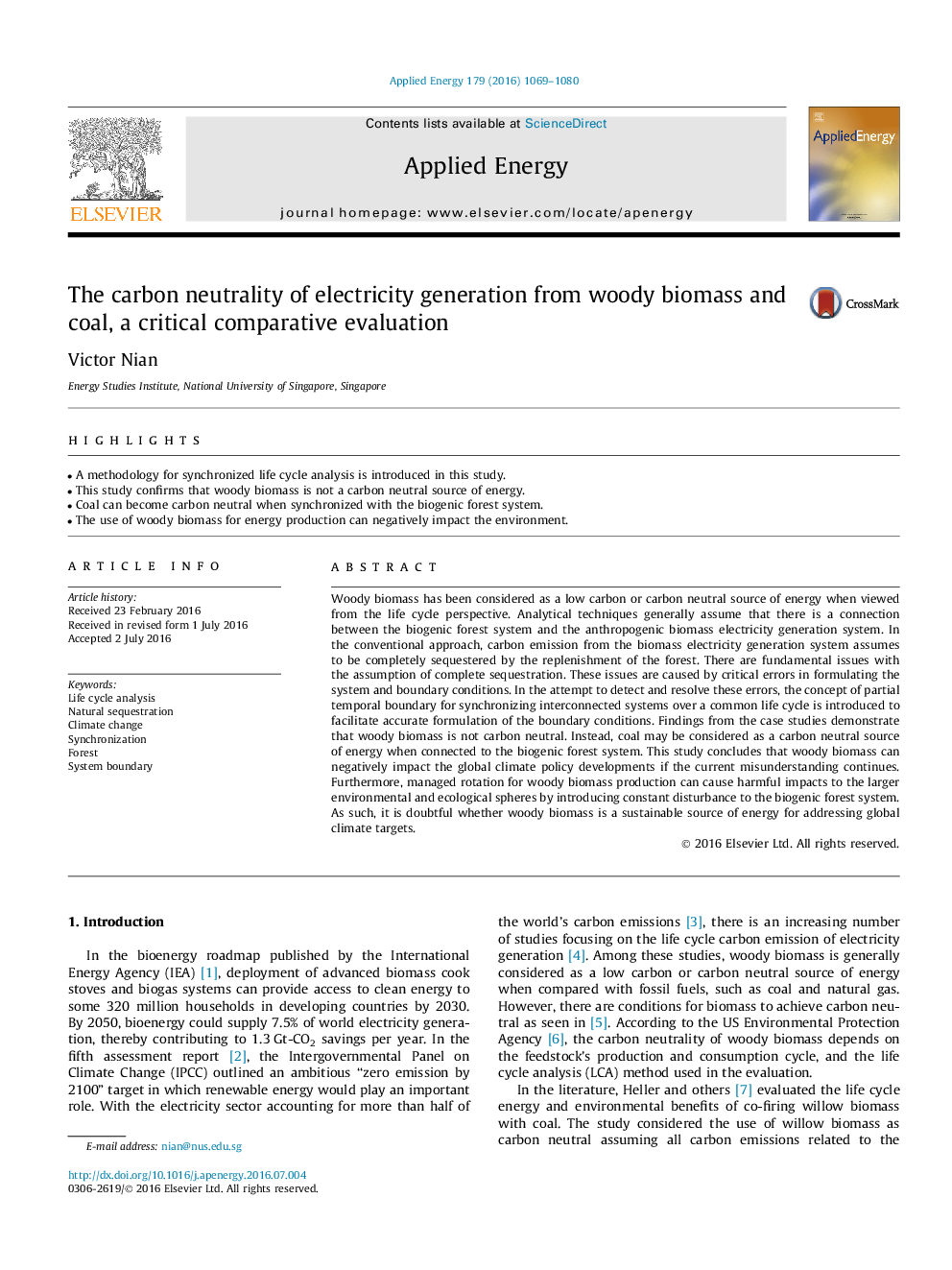| Article ID | Journal | Published Year | Pages | File Type |
|---|---|---|---|---|
| 6682338 | Applied Energy | 2016 | 12 Pages |
Abstract
Woody biomass has been considered as a low carbon or carbon neutral source of energy when viewed from the life cycle perspective. Analytical techniques generally assume that there is a connection between the biogenic forest system and the anthropogenic biomass electricity generation system. In the conventional approach, carbon emission from the biomass electricity generation system assumes to be completely sequestered by the replenishment of the forest. There are fundamental issues with the assumption of complete sequestration. These issues are caused by critical errors in formulating the system and boundary conditions. In the attempt to detect and resolve these errors, the concept of partial temporal boundary for synchronizing interconnected systems over a common life cycle is introduced to facilitate accurate formulation of the boundary conditions. Findings from the case studies demonstrate that woody biomass is not carbon neutral. Instead, coal may be considered as a carbon neutral source of energy when connected to the biogenic forest system. This study concludes that woody biomass can negatively impact the global climate policy developments if the current misunderstanding continues. Furthermore, managed rotation for woody biomass production can cause harmful impacts to the larger environmental and ecological spheres by introducing constant disturbance to the biogenic forest system. As such, it is doubtful whether woody biomass is a sustainable source of energy for addressing global climate targets.
Related Topics
Physical Sciences and Engineering
Energy
Energy Engineering and Power Technology
Authors
Victor Nian,
